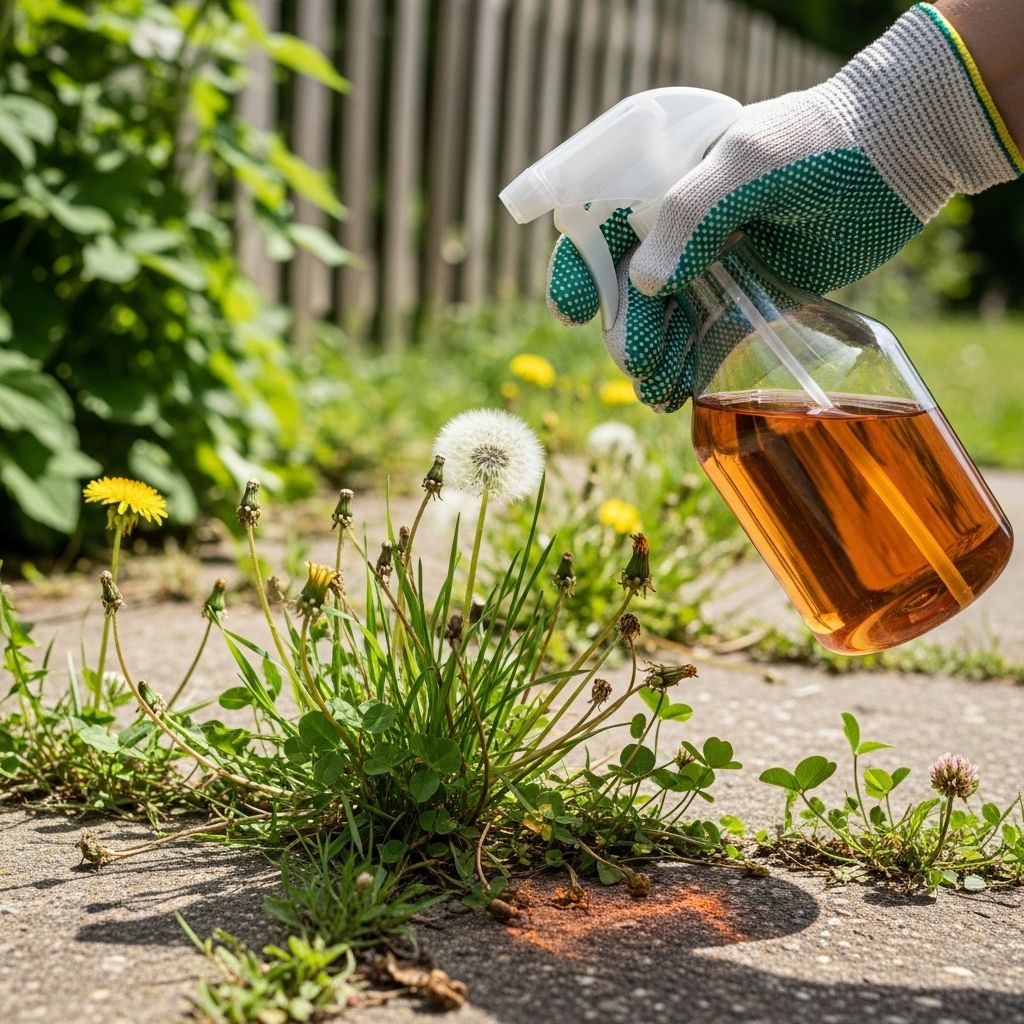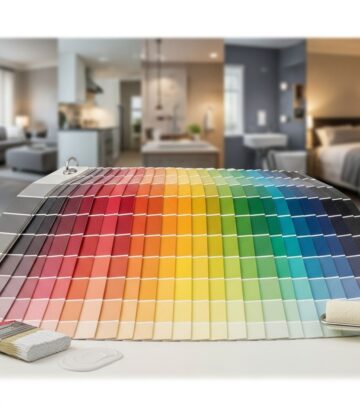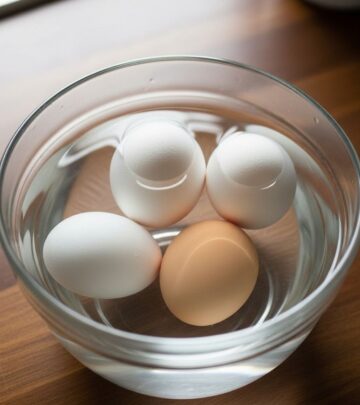How To Make Homemade Weed Killer: 5 Effective DIY Recipes
Natural solutions to tackle unwanted garden invaders without harsh chemicals

Image: HearthJunction Design Team
The Benefits of Homemade Weed Killers
Dealing with unwanted weeds is a constant battle for gardeners and homeowners. While commercial weed killers are readily available, many contain harsh chemicals that may harm beneficial insects, pets, and the environment. Homemade weed killers offer a more natural approach to weed control, utilizing common household ingredients that are effective, less toxic, and significantly more affordable.
Creating your own weed-killing solutions gives you control over what goes into your garden and surrounding landscape. Most homemade weed killers cost just a fraction of commercial products while delivering comparable results when used correctly. These natural alternatives are particularly valuable for families with children and pets, as they eliminate exposure to potentially harmful synthetic herbicides.
Understanding How Homemade Weed Killers Work
Before diving into specific recipes, it’s important to understand how these natural solutions actually kill weeds. Most homemade weed killers work in one of three ways:
- Desiccation: Ingredients like vinegar and salt draw moisture out of plant tissues, causing them to dry out and die.
- pH Alteration: Some ingredients change the soil pH to levels that are inhospitable to weed growth.
- Heat Damage: Methods like boiling water essentially cook weed tissues, causing immediate cellular damage.
It’s worth noting that most homemade weed killers are non-selective, meaning they’ll kill any plant they contact, not just weeds. Exercise caution when applying these solutions near valued garden plants. Additionally, many homemade options primarily kill the visible portions of weeds without addressing the root systems, which may require repeated applications for complete eradication.
The Classic Vinegar-Salt-Soap Solution
The most popular homemade weed killer combines three simple ingredients: vinegar, salt, and dish soap. This powerful combination has been proven effective across various garden situations and has become a staple for organic gardeners.
Ingredients:
- 1 gallon of regular vinegar (white distilled or cleaning vinegar)
- 1 cup of table salt or rock salt
- 2 tablespoons of liquid dish soap (Dawn is often recommended)
How to Make It:
- Pour the vinegar into a large container or directly into your sprayer if it has a wide opening.
- Add the salt to the vinegar and stir until completely dissolved.
- Add the dish soap and gently mix to combine without creating excessive foam.
- Transfer to a spray bottle or garden sprayer if not already in one.
How It Works:
Each ingredient in this recipe serves a specific purpose. The vinegar contains acetic acid that draws moisture from plant leaves, effectively burning them. The salt enhances this desiccation effect and disrupts the water balance within plant cells. The dish soap acts as a surfactant, breaking down the waxy protective coating on weed leaves and helping the vinegar-salt solution stick to the plant surface longer for maximum effectiveness.
For best results, apply this mixture on a sunny, warm day when no rain is forecasted for at least 24-48 hours. The heat from the sun intensifies the burning action of the vinegar and salt. This solution works particularly well on young, annual weeds with shallow root systems, though perennial weeds with established root systems may require multiple treatments.
Vinegar Variations for Stronger Weed-Killing Power
While regular household vinegar (typically 5% acetic acid) works well for common weeds, more stubborn varieties may require stronger solutions. Consider these vinegar variations for enhanced weed-killing power:
Horticultural Vinegar Solution
Horticultural vinegar contains 20-30% acetic acid, making it significantly stronger than household vinegar. When using horticultural vinegar, protective gear including gloves, eye protection, and appropriate clothing is essential as it can cause skin irritation and eye damage.
Mix horticultural vinegar with dish soap at a ratio of 1 gallon vinegar to 1 tablespoon soap. Salt can be added (1 cup per gallon) for extra effectiveness, though the stronger vinegar often works well without it. This solution is particularly effective on tough, established weeds that resist standard vinegar treatments.
Apple Cider Vinegar Alternative
Apple cider vinegar can be substituted for white vinegar in the basic recipe. While it contains the same acetic acid concentration as white vinegar, some gardeners report slightly better results, possibly due to additional compounds present in the apple cider variant. The application method and ratios remain the same as the basic recipe.
Boiling Water: The Simplest Weed Killer
Sometimes the most effective solutions are also the simplest. Boiling water provides immediate results with zero chemical concerns and costs nothing beyond the energy used to heat the water. This method is particularly useful for weeds growing in sidewalk cracks, driveway seams, and other hardscaped areas.
How to Apply:
- Bring a kettle or pot of water to a rolling boil.
- Carefully pour the boiling water directly onto the weed, saturating both the plant and the surrounding soil.
- The extreme heat causes immediate cellular damage, effectively cooking the plant tissues.
Boiling water works best on small to medium-sized annual weeds. The results are instantaneous—weeds typically wilt and begin to die within hours of application. For tough perennial weeds with extensive root systems, repeated treatments may be necessary. Exercise extreme caution when handling boiling water, especially on windy days or uneven surfaces, to prevent burns.
Baking Soda for Alkaline-Sensitive Weeds
Baking soda (sodium bicarbonate) creates an alkaline environment that many weeds cannot tolerate. This method works particularly well for weeds that prefer acidic soil conditions, such as dandelions and crabgrass.
How to Apply:
- Moisten the weeds slightly with water.
- Sprinkle baking soda generously over the weeds, covering all plant parts.
- For crack weeds, work the baking soda deep into the crevice where the weed emerges.
Baking soda typically takes several days to show effects, making it slower than vinegar or boiling water solutions. However, it’s particularly effective for controlling weeds in places where you don’t want anything to grow for extended periods, as it changes the soil pH in ways that discourage new weed growth.
Alcohol-Based Weed Killers
Rubbing alcohol (isopropyl alcohol) offers another effective option for homemade weed control. Like vinegar, alcohol draws moisture from plant tissues, causing them to dry out and die.
Basic Alcohol Weed Killer Recipe:
- 2 tablespoons rubbing alcohol
- 1 quart water
- 1 teaspoon liquid dish soap (optional, for better adhesion)
Mix all ingredients in a spray bottle and apply directly to weeds, thoroughly coating all plant parts. This solution works best on sunny days when the alcohol’s drying effect is enhanced by heat and sunlight. For stronger effects, the alcohol concentration can be increased, though this increases the risk of damage to nearby desirable plants.
Best Practices for Using Homemade Weed Killers
To maximize the effectiveness of your homemade weed killers while minimizing unwanted consequences, follow these best practices:
Timing Considerations:
- Apply on warm, sunny days when no rain is forecast for at least 24-48 hours.
- Target weeds when they’re actively growing but still young, before they flower and set seed.
- Morning applications after dew has dried but before the heat of the day are generally most effective.
Application Techniques:
- Use targeted spray applications rather than broadcast spraying to avoid damaging desirable plants.
- Shield nearby plants with cardboard or plastic when applying non-selective weed killers.
- For precision in tight spaces, apply solutions with a paintbrush directly to weed leaves.
- Thoroughly coat all plant parts, especially the growing center of the weed.
Safety Precautions:
- Wear gloves when handling any weed killer, even natural ones.
- Use eye protection, especially when working with stronger vinegar solutions.
- Keep all solutions away from children and pets until completely dry.
- Store unused portions in clearly labeled containers out of reach of children.
Remember that consistent application is key with most homemade weed killers. A single treatment may kill the visible portion of the weed, but persistent perennials often require multiple applications to completely eradicate the root system.
Environmental Considerations
While homemade weed killers are generally more environmentally friendly than their commercial chemical counterparts, they’re not without environmental impact. Salt-based solutions can alter soil composition and potentially affect groundwater if used excessively. Vinegar can temporarily change soil pH, though this generally normalizes with rainfall.
For the most environmentally conscious approach, use these solutions sparingly and precisely. Avoid applying near water sources like ponds, streams, or areas where runoff could carry the solution into waterways. In vegetable gardens, consider non-chemical methods like mulching, hand-pulling, or hoeing, particularly for weeds growing close to edible plants.
Comparing Effectiveness: Homemade vs. Commercial
| Aspect | Homemade Weed Killers | Commercial Herbicides |
|---|---|---|
| Initial Cost | $3-5 per gallon | $15-30 per gallon |
| Effectiveness on Annual Weeds | High | High |
| Effectiveness on Perennial Weeds | Moderate (requires multiple applications) | High (often with single application) |
| Speed of Action | Fast (usually visible within hours) | Variable (some work quickly, others take days) |
| Environmental Impact | Lower | Higher |
| Safety Around Children/Pets | Higher (after drying) | Lower (requires waiting periods) |
Frequently Asked Questions
Q: Will vinegar-based weed killers harm my soil?
A: Vinegar temporarily acidifies soil, but this effect diminishes quickly with rainfall or watering. The salt in many recipes is more concerning for soil health, potentially affecting soil structure and future plant growth if used repeatedly in the same area.
Q: How soon can I plant after using homemade weed killers?
A: For vinegar-only solutions, you can typically plant after 2-3 days of good rainfall or thorough watering. For salt-containing recipes, wait at least 1-2 weeks and water the area thoroughly before planting. Areas treated repeatedly with salt-based solutions may require longer waiting periods or soil amendments.
Q: Are homemade weed killers safe for my pets?
A: Most homemade weed killers are safer than chemical herbicides, but still require precautions. Keep pets away from treated areas until completely dry. Avoid using solutions containing essential oils if you have cats, as many oils are toxic to felines.
Q: Why didn’t my homemade weed killer work?
A: Several factors can reduce effectiveness: application during cool or rainy weather, using diluted vinegar, treating mature perennial weeds with extensive root systems, or rainfall soon after application. For better results, apply on warm, sunny days and consider multiple treatments for established weeds.
Q: Can I use these homemade solutions on my lawn?
A: Most homemade weed killers are non-selective and will damage or kill grass along with weeds. For lawn applications, spot-treatment with a precise applicator like a small paintbrush is recommended to avoid harming desirable grass.
References
- https://savingcentbycent.com/homemade-weed-killer/
- https://womensvoices.org/2016/05/19/tip-of-the-month-diy-weed-killer/
- https://www.youtube.com/watch?v=Nqj62xdMmMI
- https://community.rspb.org.uk/nature-on-your-doorstep/f/greenfingers/43235/recipe-for-organic-weed-killer-vinegar-salt-etc-and-others
- https://stacyling.com/simple-recipe-for-homemade-weed-killer-that-works/
Read full bio of Anjali Sayee










